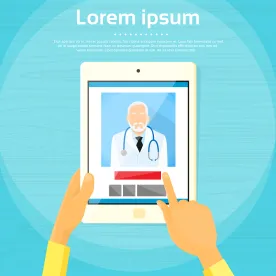While Americans continue the trend towards replacing the traditional phone call with email and texts, health care providers have yet to catch on when interacting with their patients. A recent survey by Nielsen Strategic Health Perspectives found that less than a third of Americans have access to digital communications with their physicians:
The survey found that physician offices rarely offer online appointment scheduling, email communications, or text reminders, and almost half did not make use of traditional telephonic appointment reminders. Virtual care, such as telemedicine, was almost completely unavailable.
The survey reported a gap between communications tools that patients would like when interacting with their health care providers—such as being able to send email or photos to physician practices—and the technology made available by the practices.
Several regulatory barriers may explain why physicians have lagged behind other industries in developing and using electronic communication platforms. For one, some physicians report a lack of financial incentive because they cannot bill for these technologies. Furthermore, reimbursement for telemedicine services is at a very early stage. As we previously reported, AMA’s workgroup on the development of telemedicine billing codes just met last month for the first time.
Physician practices may also be concerned about whether such communications would comply with HIPAA’s Security Rule. HIPAA’s Security Rule requires that Covered Entities implement policies and procedures to implement technical safeguards to guard against unauthorized access to electronic protected health information transmitted over an electronic communications network. The rule also requires encryption whenever deemed appropriate, as well as mechanisms to authenticate the person or entity seeking access to the information. There also remains a lack of clarity on health privacy issues that govern mobile medical technologies, which HHS has begun to address by introducing a new platform for mobile app developers to pose questions.
As patient demand for digital communication continues to increase, regulators will need to provide guidance to the industry to ensure that physicians are able to keep pace with patient needs.




 />i
/>i

